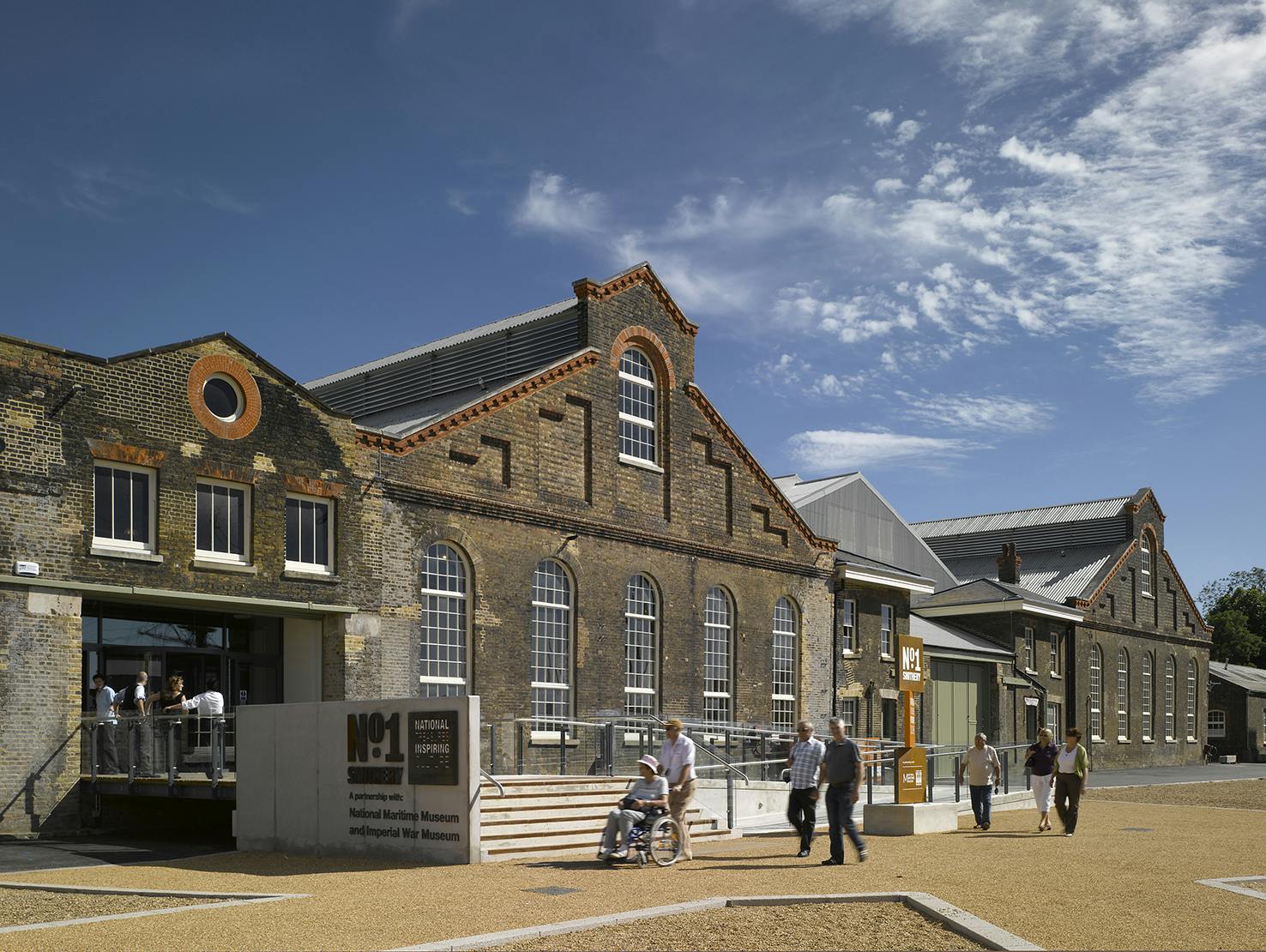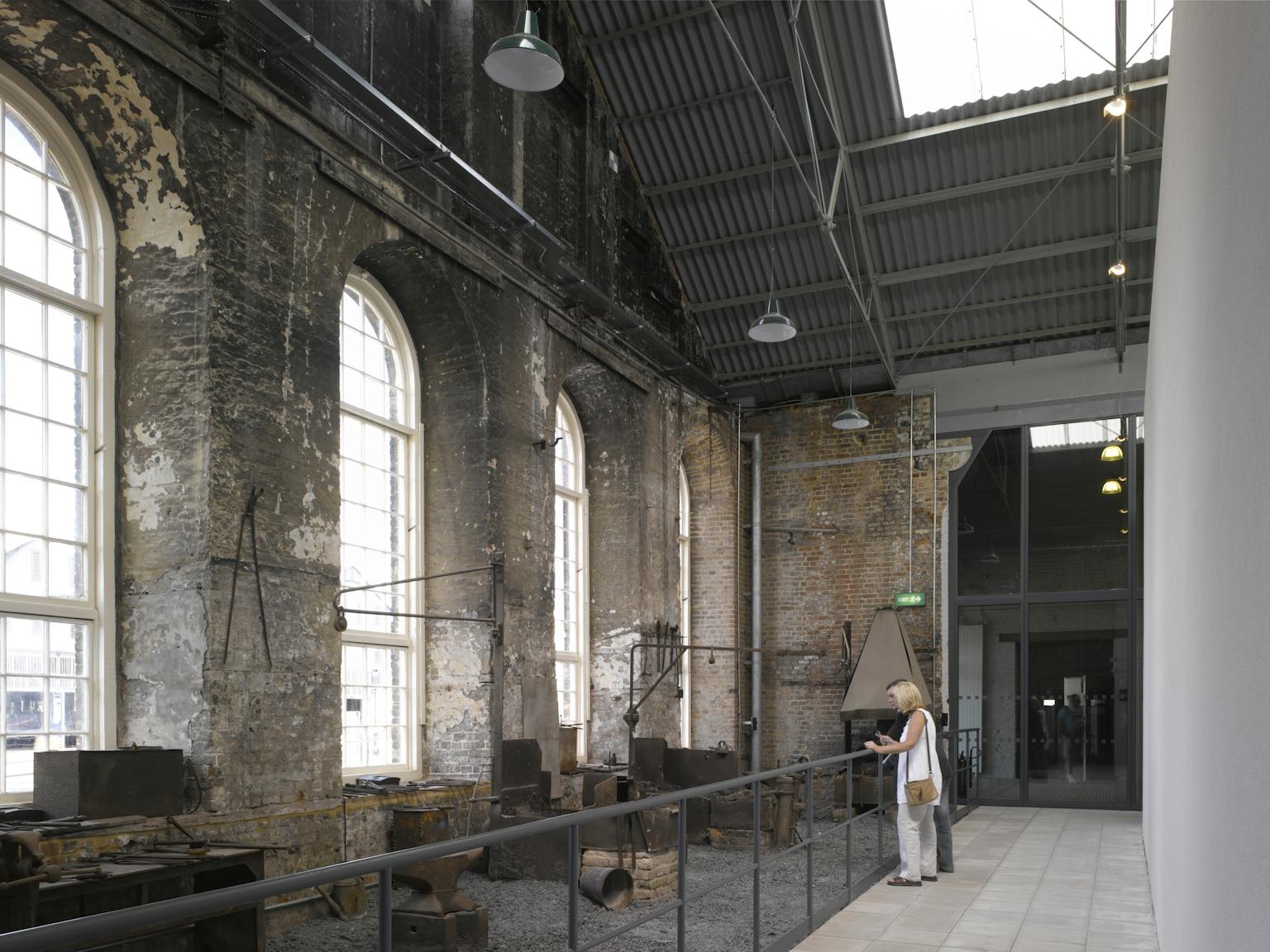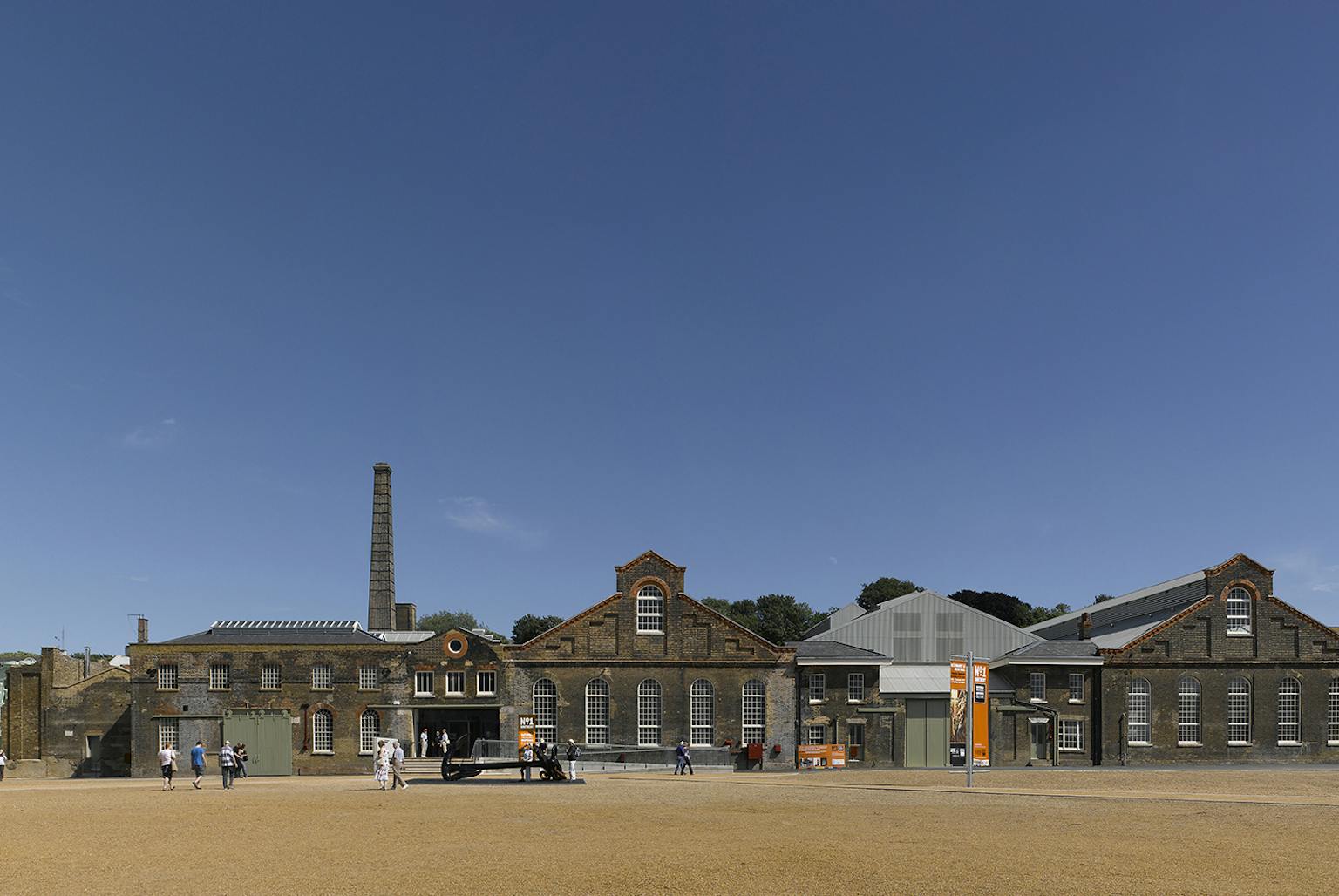
Chatham Historic Dockyard Kent: Masterplanning
Masterplan to regenerate an 80-acre dockyard site
- Location
- London & South East
- Client
- Client Chatham Historic Dockyard Trust
Purcell led several projects to develop and deliver the Chatham Historic Dockyard Masterplan. For almost four centuries, the Royal Dockyard at Chatham on the Medway River made naval ships.
Its closure marked the end of an important era in Britain’s naval history and left a huge gap for the local communities whose lives had revolved around the dockyard for generations.
The challenge of the masterplan project was how to regenerate the 80-acre site, Grade II*-listed buildings, and Scheduled Ancient Monuments with deep resonance to local people and huge significance for the nation.
The dockyard now houses one of the largest living museums in the south east of England, attracting over 170,000 visits a year. Among other attractions, visitors can explore three warships, learn about the tradition of rope-making, and see the biggest collection of lifeboats in the UK, including one dating from 1897.
In addition to the museum, more than 100 homes and a large number of businesses, including the University of Kent, are housed on the site. Throughout every aspect of the regeneration Purcell’s work to achieve the client’s aspirations for the site was guided by three main principles: sympathetic preservation of the buildings, ships and collections; educating audiences about the Royal Dockyard; providing inspirational and enjoyable experiences to all who use the site whether visitors, businesses, students or tenants.

Two projects illustrate the trust’s innovative approach to repurposing the dockyard. A £13m partnership with the Imperial War Museum and National Maritime Museum has brought the No 1 Smithery building into reuse, providing a home for more than 3,000 ship models, as well as a range exhibition galleries. Meanwhile, the renovation of the Fitted Rigging House brought the last underused building into reuse, providing 3,500m2 to tenants and unlocking the financial sustainability of the trust on a revenue basis. The dockyard is now able to meet its core annual operating costs from self-generated income following significant grant investment over several decades.
Purcell led two phases of conservation repair work at the Smithery building, including acting as conservation advisors, helping to secure Heritage Lottery Funding, leading negotiations with English Heritage and advising on the transformation of the historic building into a museum.
The design has delivered a secure, controlled environment for the artefacts without obscuring the historic fabric and character of the building. The original Georgian brick walls and steel structure have been repaired using compatible materials with sound elements left in their raw state so that visitors can see how the building would have looked in use. A joint venture between The National Maritime Museum, The Imperial War Museum and The Historic Dockyard Chatham, the museum collection features 4,000 model ships as well as marine art and artefacts.

Working with the University of Kent and the Chatham Historic Dockyard Trust, Purcell led the sensitive transformation of five of the dockyard’s principal buildings, The Smithery, The Central Boiler House, The Firestation, The Foundry and The Engineers Workshop to provide a fine arts centre with large studios, a student workshop, music studios and a dance studio for the university. The development contained a variety of listed buildings and scheduled ancient monuments.
To ensure their preservation, we liaised closely with English Heritage and Medway Council to meet all historic building requirements, completing five separate change of use and four scheduled monument applications. English Heritage were very supportive of Purcell’s strategic and detailed work to bring the dockyard back to life. The project provided the University with a flexible series of spaces that can each be used to maximum advantage. To ensure all future use is as unhindered as possible with state-of-the-art facilities for the education functions, new wall linings and floors were installed throughout and the music studios were set up as self-contained units to maximise acoustic and equipment needs while observing the building’s historic fabric restrictions.



